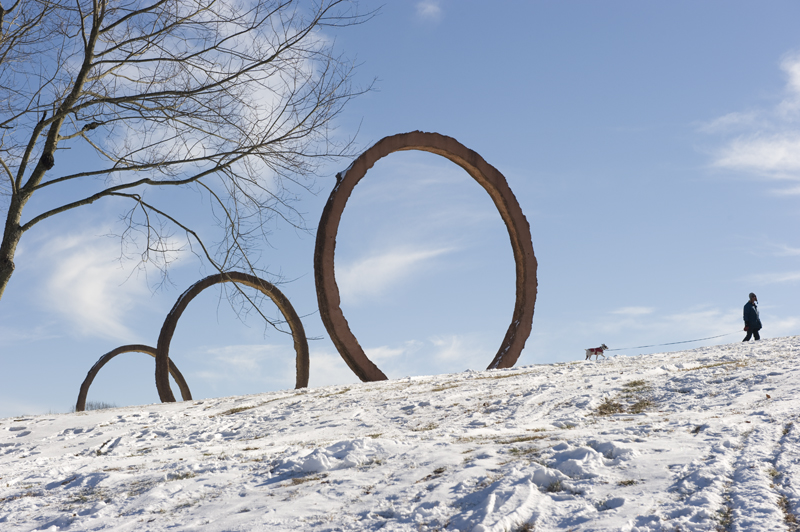Activity Idea: Poetry inspired by Gyre (Quick Tip)
Gyre-Inspired Poetry Connections
By Katherine White, NCMA Deputy Director
Gyre (1999) sits alongside one of our Museum Park trails. Composed of three rings, Sayre’s monumental work points to the relationship between humans and nature. According to Sayre, Gyre was inspired by a poem by W. B. Yeats, who often explored the relationship between the spiral and the history of mankind.
As more and more of us enjoy nature from the comfort of our homes, we selected four poems that remind us of nature’s beauty, offerings, and reliability.
- “On the Pulse of Morning” by Maya Angelou
- “I wandered lonely as a cloud” by William Wordsworth
- “Nature is what we see” by Emily Dickinson
- “The Gladness of Nature” by William Cullen Bryant
In our interview with Thomas Sayre, he mentioned that another poem, “Anecdote of the Jar” by Wallace Stevens, has inspired many of his objects.
At Home
Are you interested in capturing your ideas about nature, spirals, or the relationship between humans and nature? We recommend two forms of poetry for experimentation and invite you to post poems inspired by Gyre or other works of art in the collection. Share your poems on social media and tag the NCMA.
- Haiku: In its simplest form, this Japanese form of poetry has three lines and often focuses on the beauty of nature. The first and third lines have five syllables, and the second line has seven. Haikus are often as simple in content as they are in form.
Gyre meets my eye,
Sitting amidst earth and sky.
Three rings I see – Why?
- Ode: A bit more complex in form, odes are lyrical poems meant to be sung and offering praise of people, places, or things. Often about nature, odes come in three different forms and are imaginative, yet formal, and full of sincerity and elaborate language. The irregular ode uses rhyme but does not conform to other rules.
To Gyre
Looming beautifully above me in the light,
You stand welcoming, gracious, yet strong.
How did you come to stand tall and proud both day and night?
Was your creation arduous and long?
Or perhaps you were a quick idea, inspired by mind’s might.
And perhaps you rose easily, like the melody of a wistful song.
Indelible, your weight, your image graces every eye that passes.
You stand with beauty, dignity to all; not some.
Your composition of earth’s gifts by man’s hands appeals to masses,
Reminding us there is always a reason to come.
Happy are the hearts and eyes that walk your trail.
Inspired are the minds to ponder your rings, large and earthen.
Are we to imagine a spiraling continuity, a connection of all strong and frail?
Or are your three rings finite, ending where they begin?
Perhaps the answer is in each one of us, and in that the beauty lies.
For each of us brings our own experience be it fleeting or old and wise.

